Last updated: January 15, 2025
Can a Horse’s Kick Kill You?
Yes, a horse’s kick can be deadly. With over 2,000 PSI of force, a kick can shatter bones, cause internal injuries, and even result in fatal trauma. In the U.S., horse-related incidents cause about 50,000 injuries annually, many from kicks. Understanding why horses kick, recognizing warning signs, and following safety practices is crucial for protecting both you and your horse.
Drawing from over 25 years of training racehorses and a lifetime spent around horses, supported by in-depth research from reputable publications like BMJ Case Reports and The American Journal of Forensic Medicine and Pathology, this guide offers essential knowledge and practical safety tips to help you stay safe around these powerful animals.
Having seen firsthand the devastating effects of horse kicks, my goal is to pass on this knowledge—just as my grandfather once did for me—so you can confidently stay safe around these powerful animals.
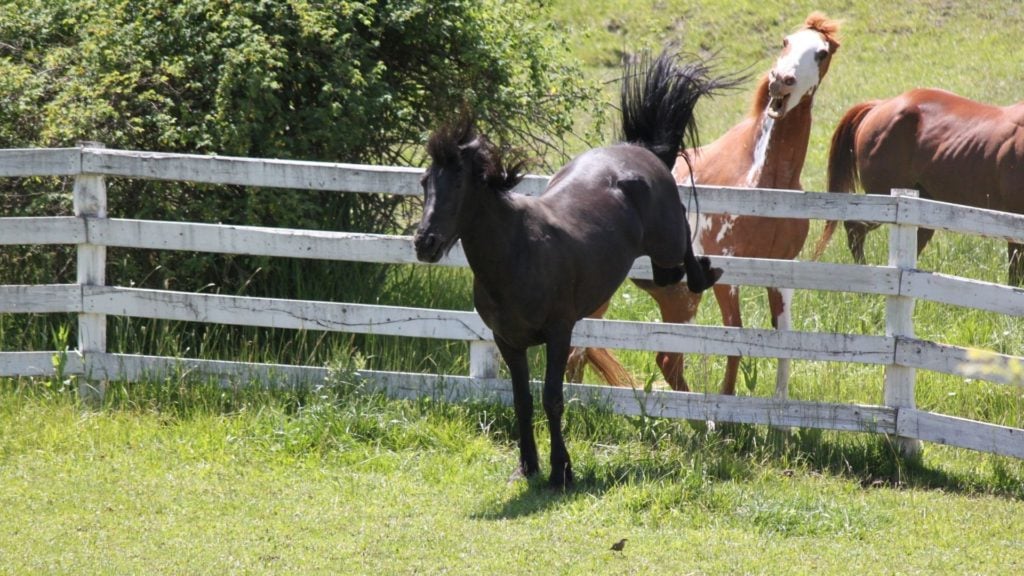
Deadly Force: How a Horse’s Kick Can Be Fatal
Horses are powerful animals, and their kicks can be unexpectedly dangerous. Understanding the sheer force behind a horse’s kick and the injuries it can cause is essential for recognizing the risks and staying safe around these animals.
Most horse kicks come from the rear legs, delivering tremendous force, but horses can also strike from the side using their hindquarters. Being aware of a horse’s positioning—especially avoiding their blind spots—is crucial for staying safe and preventing injuries.
Unmatched Strength and Concentrated Impact
A horse’s hindquarters are built for speed and strength, allowing it to deliver a kick with over 2,000 PSI of pressure—far exceeding the force of a professional boxer’s punch or a baseball bat swung at full strength. Because this force is focused through the small, solid surface of the hoof, it can cause damage similar to injuries sustained in high-speed car accidents or blunt force trauma.
Studies in the National Institutes of Health highlight how concentrated hoof impact can cause severe internal injuries. According to the NIH study, blunt trauma from horse kicks can cause internal injuries similar to those sustained in high-speed vehicle collisions, emphasizing how dangerous a kick can be.
Severe and Fatal Consequences
Horse kicks have been documented to cause a range of serious and sometimes fatal injuries, including:
- Internal Bleeding and Organ Damage: The immense force can cause internal trauma and organ damage, often without immediate external signs. Traumatic right ventricular rupture following a horse kick
- Skull Fractures and Head Trauma: A kick to the head can lead to skull fractures and life-threatening brain injuries.
- Fatal Cardiac Injuries: Kicks to the chest have resulted in fatal conditions like pericardial tamponade and cardiac rupture.
- Learn More: Equestrian Injuries Caused by Horse Kicks
According to the Nationwide Children’s Hospital, while falling or being thrown was the most common mechanism among mounted individuals (74%), the majority of unmounted individuals were injured from being kicked (42%) or stepped on/trampled/crushed (27%). Nationwide Children’s Hospital
These serious risks highlight the importance of recognizing warning signs and following proper safety practices when working with or around horses.
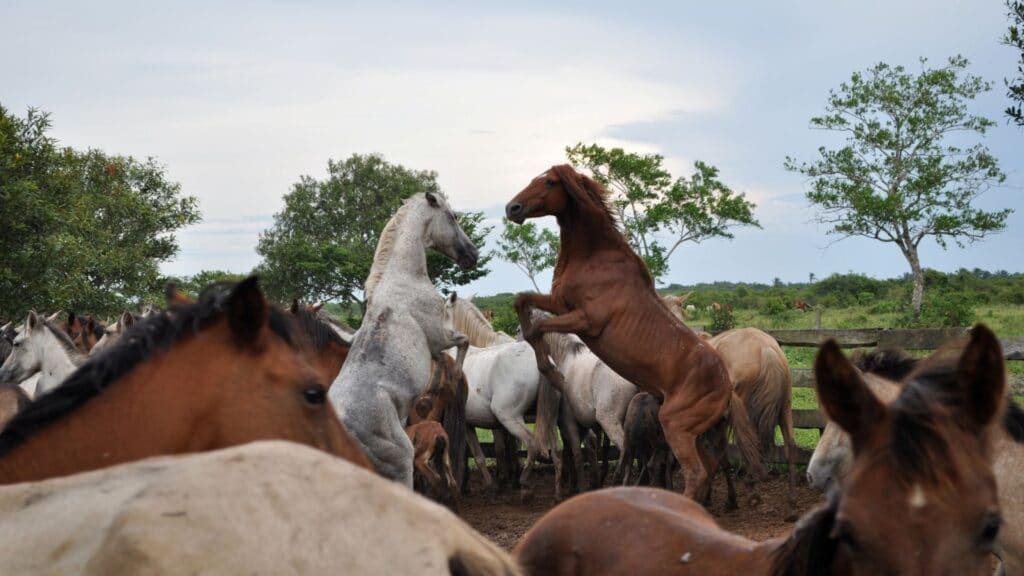
Why Do Horses Kick? Common Triggers and How to Prevent Them
Horses don’t kick without reason. Understanding their motivations and knowing how to address them can help prevent accidents and build trust between you and your horse.
1. Fear and Self-Defense
Horses are prey animals, and when startled or threatened, their instinct is to defend themselves—often by kicking. This can happen if a horse is surprised by sudden movements, loud noises, or unfamiliar objects. For example, a farrier mishandling a horse’s foot might trigger this defensive response.
Prevention Tip:
Introduce desensitization exercises to help your horse stay calm in new situations. Gradually exposing them to different sights, sounds, and experiences, while using positive reinforcement, builds trust and reduces fear-based reactions. Learn how positive reinforcement can help your horse stay calm.
2. Pain and Discomfort
Horses in pain may kick to protect a sore or sensitive area. Common health issues like gastric ulcers, arthritis, or even poorly fitted tack can lead to unexpected aggression or defensive kicking.
Prevention Tip:
If your horse suddenly starts kicking or shows other signs of irritability, consult a veterinarian to rule out pain or discomfort. Regular health check-ups and properly fitted tack can prevent pain-related behavior.
3. Playfulness
Young horses, in particular, may kick during play. While playful kicks aren’t meant to harm, they can still be dangerous if handlers are too close.
Prevention Tip:
Establish clear boundaries during handling and provide plenty of supervised turnout time. Training sessions that channel energy into positive activities can help reduce accidental kicks.
4. Communication and Dominance
Horses may kick to assert dominance or establish personal space within a herd. This behavior can extend to interactions with humans if clear boundaries aren’t set.
Prevention Tip:
Consistent handling and positive reinforcement training can teach your horse to respect personal space. Avoid situations where the horse feels the need to assert dominance.
5. Resource Guarding
Some horses become territorial around food, water, or personal space, leading them to kick if they feel their resources are threatened.
Prevention Tip:
Feed horses separately or provide adequate space during feeding times to prevent competition. Recognizing and managing these situations can reduce resource-guarding behavior.
During my time in barrel racing, I knew a competitor who was tragically killed by her own horse. She was mucking out the stall when the horse—a trusted companion with no history of aggression—kicked her in the chest, causing fatal injuries. This devastating event was a sobering reminder that even horses we know well can react unpredictably in certain situations.

Warning Signs Your Horse May Kick (and How to Stay Safe)
Recognizing subtle cues can prevent kicks. Horses typically give warnings before resorting to defensive behavior. The ASPCA emphasizes that interpreting these signals is crucial for avoiding accidents. Learn more about interpreting horse body language from the ASPCA.
The Rutgers Equine Science Center highlights that horses, as social animals, communicate emotions and intentions through body language and vocalizations. Recognizing these cues is essential for safe handling. Explore more from the Equine Science Center.
Pinned Ears: A Strong Warning Signal
- Meaning: Flattened ears signal agitation, fear, aggression, or discomfort. Horses often pin their ears flat before they kick, making this one of the most critical warning signs.
- Context: If a horse pins its ears when feeling cornered or approached by a stranger, the risk of kicking increases. When combined with tail swishing or stomping, the danger is even greater.
- I had a filly who would always pin her ears before kicking—a crucial sign that helped me and my handlers avoid serious injuries.
Swishing Tail: More Than Just a Fly Swat
- Meaning: A tense, rapidly swishing tail signals frustration or irritation, unlike the relaxed tail movement used to swat flies.
- Context: Tail swishing during grooming or riding can indicate discomfort, possibly from poorly fitted tack or irritation.
Stomping Feet: A Step Toward Aggression
- Meaning: Repeated stomping shows irritation and can escalate to a kick if ignored. It’s a way for horses to signal that they want more space.
- Context: Horses stomp when they feel uncomfortable, stressed, or irritated, especially if their space feels invaded.
Body Tension: A Sign of Readiness to Kick
- Meaning: A rigid, tense body often suggests fear or discomfort. This body language can be a precursor to defensive kicking.
- Context: Tension might be in response to a perceived threat or environmental frustration.
Turning Hindquarters: A Clear Warning
- Meaning: When a horse turns its hindquarters toward you, it signals a readiness to kick. This is a defensive posture.
- Context: This behavior is especially threatening when combined with pinned ears or tail swishing. It’s a clear sign to back away.
Showing the Whites of the Eyes: Extreme Stress
- Meaning: Visible white around a horse’s eyes indicates extreme fear or agitation.
- Context: A horse showing the whites of its eyes feels very threatened and may react unpredictably.
Ignoring these warning signs can result in serious injuries like fractures or internal trauma. It can also cause ongoing behavioral issues that make future handling more dangerous.
By understanding these behaviors, you can prevent accidents and improve your bond with your horse. For more detailed guidance, check out our in-depth guide on Horse Behavior and Body Language.
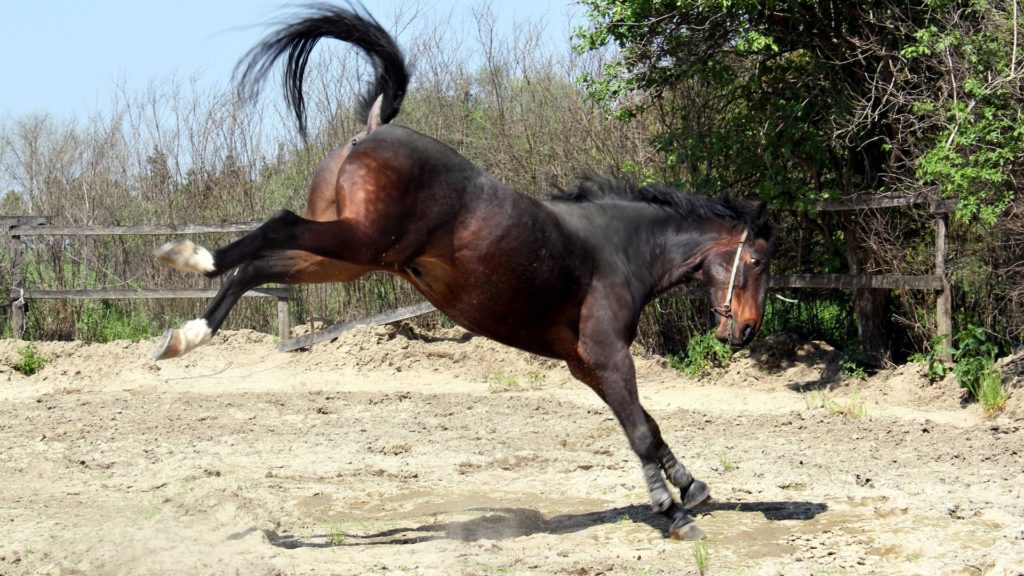
Effective Safety Practices for Handling Horses
Staying safe around horses requires understanding their behavior and taking proactive steps to prevent accidents. Horses are powerful animals, and even well-trained horses can react unpredictably in certain situations. Following these safety practices can help protect both you and the horse.
1. Understand Horse Behavior
Understanding a horse’s natural instincts and behavior helps prevent accidents and builds trust. Recognizing behavioral patterns is the first step toward staying safe.
- Know Herd Dynamics: Horses have a social hierarchy. Dominance behaviors may appear when horses interact with humans.
- Identify Triggers: Some horses are more sensitive to sounds, movements, or specific environments. Understanding these triggers can prevent reactions like kicking.
- Recognize Energy Levels: High-energy horses may be more reactive. Adjust your handling approach based on the horse’s mood and activity level.
2. Safety Recommendations for Handling Horses
When handling horses, move with quiet, steady movements to avoid startling them. Sudden or jerky motions can trigger defensive reactions. Always be mindful of your positioning—especially around young or unpredictable horses—and avoid standing directly behind them. If you need to pass behind a horse, either stay very close with a hand on their body or far enough away to avoid being struck by a full-force kick.
- Approach Safely: Always approach from the front or side, never from behind.
- Observe Body Language: Pay close attention to ear position, tail movement, and body tension.
- Avoid Sudden Movements: Move calmly and predictably to avoid startling the horse.
- Speak Calmly: Use a soft, steady voice to reassure the horse.

3. Use Protective Measures
- Wear Protective Gear: Always wear a helmet and sturdy boots when working around horses. Helmets protect against head injuries, while boots prevent foot injuries if stepped on.
- Use Proper Handling Tools: Lead horses with a well-fitted halter and lead rope for better control.
- Use Protected Contact: Protected contact is a training method that uses barriers (like stall doors or gates) between the handler and the horse to prevent injury while still allowing interaction and training.
- Use Barriers When Necessary: If a horse is known to guard resources (like feed) aggressively, use barriers to protect yourself while handling or feeding.
4. Responding to Behavioral Issues
- Seek Professional Help: If a horse shows persistent kicking or aggressive behavior, consult a professional trainer or equine behaviorist to address the problem safely.
- Identify Triggers: Keep track of situations where the horse becomes agitated. Identifying and managing triggers can help prevent dangerous behavior.
5. Be Prepared for Emergencies
- Know Emergency Procedures: Keep a first aid kit accessible and know how to contact emergency services in case of serious injury.
- Report Incidents: If you’re at a public stable or facility, report any accidents to the management for documentation and safety reviews.
At our barn, when working with young or unpredictable horses, we always tie them in controlled environments using quick-release knots. We avoid standing directly behind them and use quiet, steady movements to build trust. This practice has prevented countless accidents and keeps both our handlers and horses safe.
These safety strategies come directly from over 25 years of working with horses and staying updated on the latest research in equine behavior and safety.
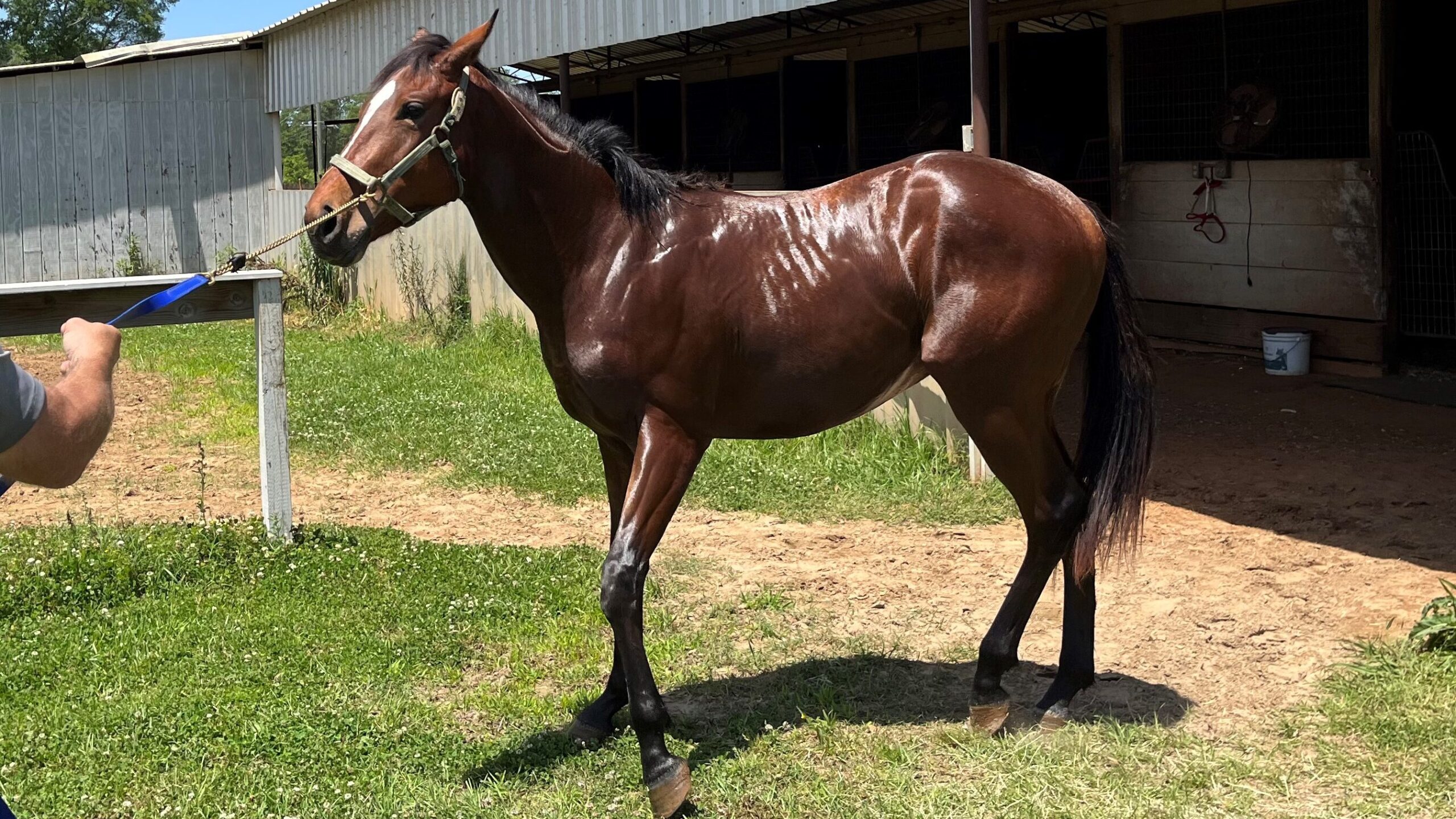
Emergency Preparedness: How to Handle Horse-Related Injuries
If the horse kicks near the head, chest, or abdomen, seek emergency care immediately, even if symptoms seem mild.
1. Call for Help:
If the injury is severe, call 911 or local emergency services immediately. Even if the injury seems minor, internal damage can be life-threatening.
2. Apply First Aid:
- Control Bleeding: Apply pressure to any wounds.
- Reduce Swelling: Use ice packs on swollen areas.
- Immobilize Injuries: Avoid moving the injured area if a fracture is suspected.
3. Monitor for Serious Symptoms:
Watch for dizziness, nausea, shortness of breath, or severe pain. Seek immediate medical attention if these symptoms occur.
4. Report the Incident:
If you’re at a public stable or facility, report the accident to management for documentation and safety evaluations.
5. Be Prepared for Emergencies: Emergencies can happen at any time when working with horses. Being prepared can make all the difference in preventing minor injuries from becoming serious or life-threatening situations.
- Know Emergency Procedures: Keep a fully stocked first aid kit accessible in the barn and trailer. Ensure you know how to contact emergency services and your veterinarian quickly.
- Have Important Contacts Handy: Post emergency contact numbers, including your veterinarian, farrier, and local equine emergency services, in a visible area.
- Train Handlers on Safety Protocols: Make sure all handlers and family members know basic first aid procedures and how to act in an emergency.
When my son was kicked in the thigh by a horse, we immediately applied ice and had him examined by a doctor. Thankfully, he was okay, but it reminded me how vital it is to have a first aid kit and emergency contact list easily accessible.
Helpful Resource: For a comprehensive guide on how to handle horse-related injuries, refer to the AAEP’s Equine Emergency First Aid Guide. This trusted resource covers essential first-aid techniques every horse owner should know.
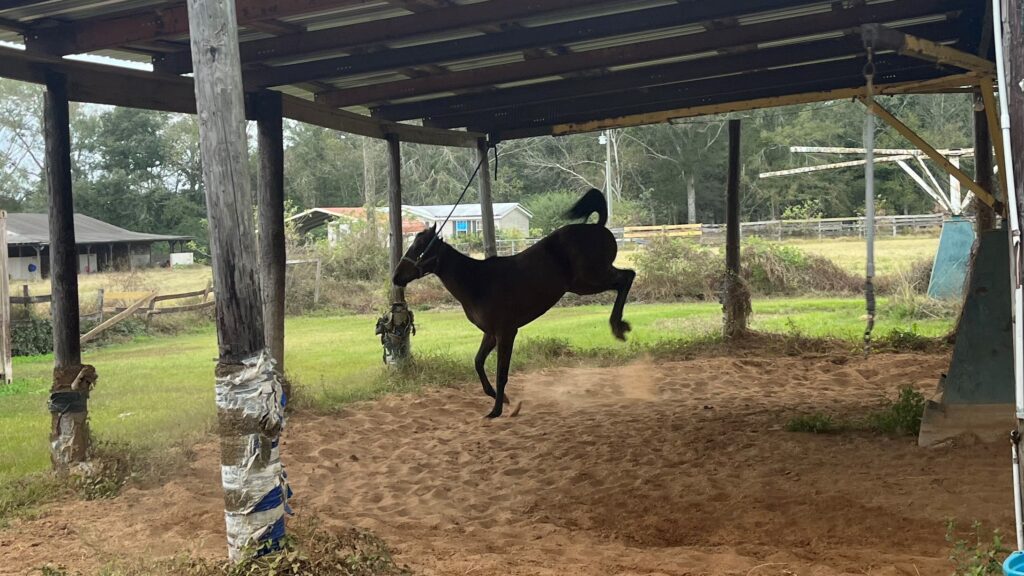
Frequently Asked Questions About Horse Kicks
Can a horse’s kick kill you?
Yes. Kicks to the head, chest, or abdomen can cause fatal injuries, including skull fractures and cardiac damage.
How do I handle a horse that kicks?
Approach calmly, recognize body language cues, and consult an experienced trainer if necessary. To fix the problem, the troubled horse must learn the proper pecking order at your farm; you are the leader.Learn more about building trust with your horse in our article on Establishing Leadership in Horse Training.
Can a horse be mad at you?
Yes, horses can be mad at you. If you treat them poorly, they may become resentful and even hostile. A horse is a complex and social creature, and it’s important to remember that they deserve our respect and care.
Is it normal for horses to kick?
Yes. Horses kick for various reasons, but understanding their behavior can prevent dangerous situations.
Can protective gear prevent injuries from horse kicks?
Gear like riding helmets and boots can lessen injury severity but won’t eliminate the risk.
Visual learning can be incredibly effective. Watch this video by Clinton Anderson for practical training exercises to correct kicking behavior:
Conclusion
A horse’s kick is no small risk—it can be deadly. By understanding why horses kick, recognizing early warning signs, and handling them with care, you can significantly reduce the risk of serious injury. Horses are powerful, majestic animals that deserve our respect and thoughtful handling.
My goal is to promote safe, responsible horse handling to protect both people and horses from preventable injuries.
I’ve seen firsthand how quickly a calm situation can turn dangerous, and it’s why I emphasize safety in every interaction. Whether you’re a seasoned horse owner or just beginning your journey, prioritizing safety isn’t just smart—it’s essential.
For more in-depth safety tips and handling techniques, visit horseracingsense.com or reach out to me directly at mileshenry@horseracingsense.com. I’m always here to help you stay safe and build a better relationship with your horse.
If you’ve found these tips helpful, share this article with other horse owners to promote safety and awareness. Have a story or tip? Let me know in the comments!
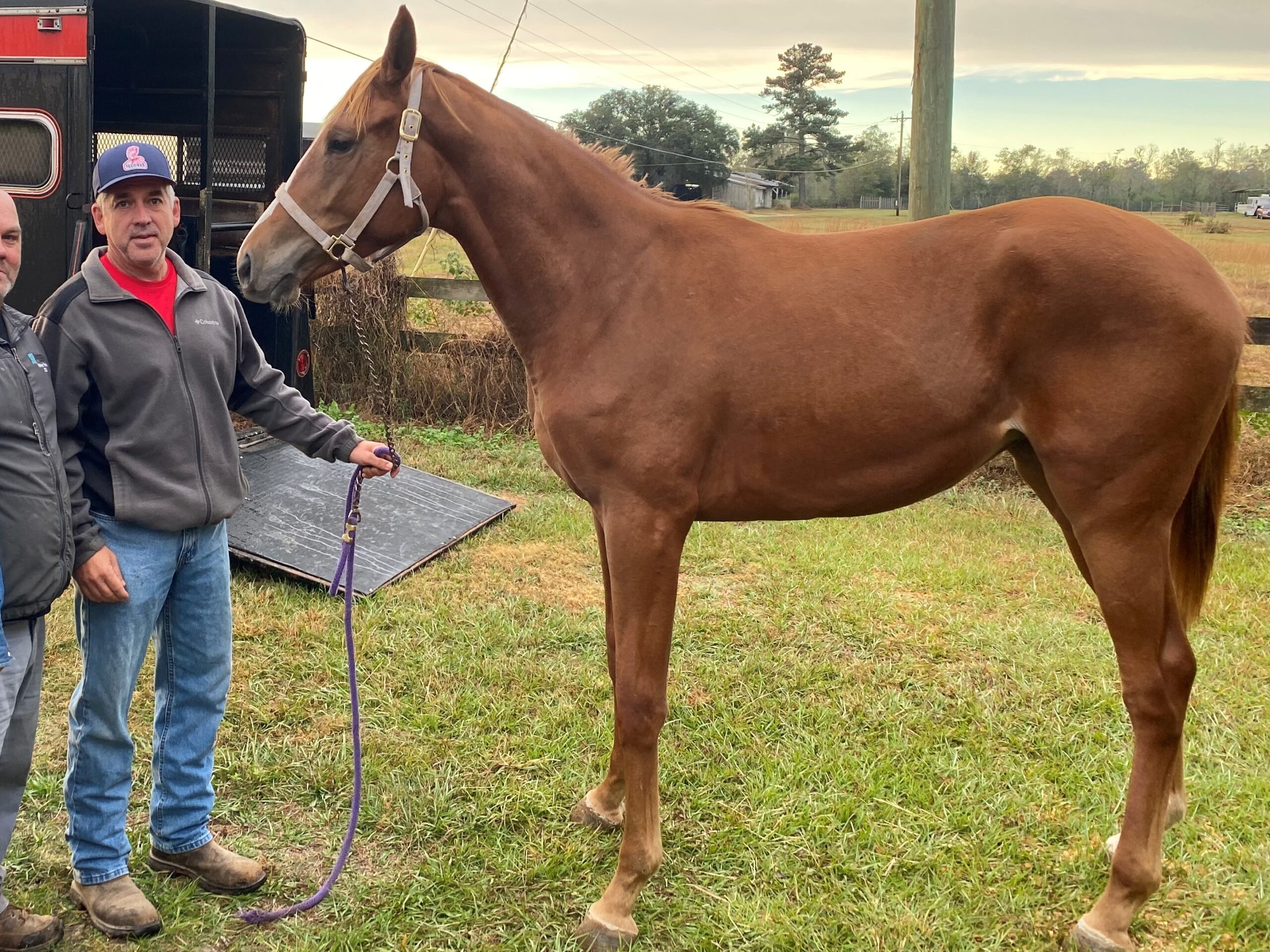
About the Author: Miles Henry
Lifelong Horseman | Racehorse Owner | Published Author
Miles Henry brings over 25 years of hands-on experience training and owning Thoroughbred racehorses. Raised with Quarter Horses and Appaloosas, he’s spent a lifetime learning from horses—on the track, in the barn, and in the field. Today, he runs a small but successful racing stable in Louisiana and shares real-world insights on HorseRacingSense.com, helping horse owners, fans, and bettors navigate the sport with confidence.
📚 Books: View Miles’s books on Amazon »
🎧 Podcast Guest: Animal Tales Ep. 32 |
YouTube Interview
📩 Newsletter: Sign up for racing tips and horse care advice »
🔗 Follow Miles:
Twitter |
Facebook |
YouTube


